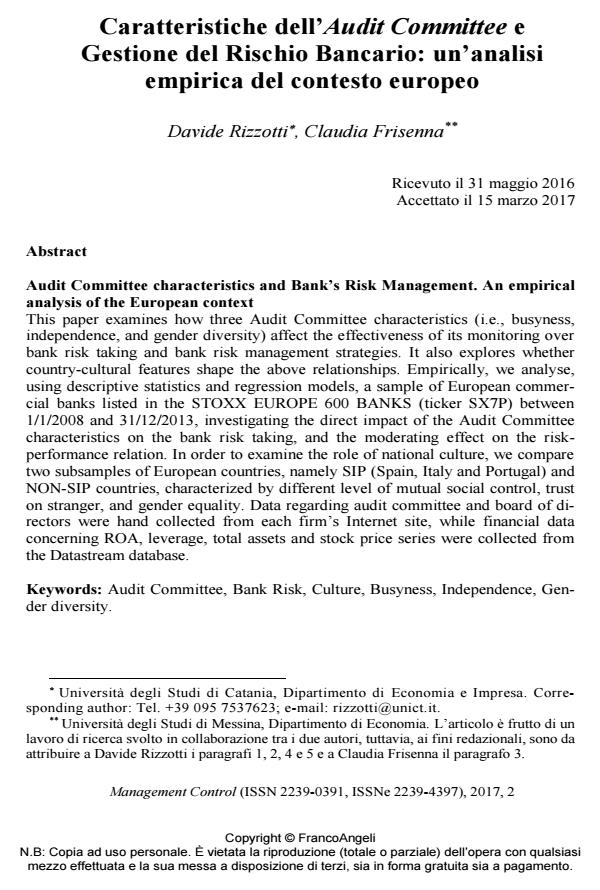Caratteristiche dell’Audit Committee e Gestione del Rischio Bancario: un’analisi empirica del contesto europeo
Titolo Rivista MANAGEMENT CONTROL
Autori/Curatori Davide Rizzotti, Claudia Frisenna
Anno di pubblicazione 2017 Fascicolo 2017/2
Lingua Italiano Numero pagine 22 P. 125-146 Dimensione file 537 KB
DOI 10.3280/MACO2017-002007
Il DOI è il codice a barre della proprietà intellettuale: per saperne di più
clicca qui
Qui sotto puoi vedere in anteprima la prima pagina di questo articolo.
Se questo articolo ti interessa, lo puoi acquistare (e scaricare in formato pdf) seguendo le facili indicazioni per acquistare il download credit. Acquista Download Credits per scaricare questo Articolo in formato PDF

FrancoAngeli è membro della Publishers International Linking Association, Inc (PILA)associazione indipendente e non profit per facilitare (attraverso i servizi tecnologici implementati da CrossRef.org) l’accesso degli studiosi ai contenuti digitali nelle pubblicazioni professionali e scientifiche
This paper examines how three Audit Committee characteristics (i.e., busyness, independence, and gender diversity) affect the effectiveness of its monitoring over bank risk taking and bank risk management strategies. It also explores whether country-cultural features shape the above relationships. Empirically, we analyse, using descriptive statistics and regression models, a sample of European commercial banks listed in the STOXX EUROPE 600 BANKS (ticker SX7P) between 1/1/2008 and 31/12/2013, investigating the direct impact of the Audit Committee characteristics on the bank risk taking, and the moderating effect on the risk-performance relation. In order to examine the role of national culture, we compare two subsamples of European countries, namely SIP (Spain, Italy and Portugal) and NON-SIP countries, characterized by different level of mutual social control, trust on stranger, and gender equality. Data regarding audit committee and board of directors were hand collected from each firm’s Internet site, while financial data concerning ROA, leverage, total assets and stock price series were collected from the Datastream database.
Parole chiave:Audit Committee, Bank Risk, Culture, Busyness, Independence, Gen-der diversity.
- Diversity and Equity in Accounting Davide Rizzotti, Claudia Frisenna, pp.215 (ISBN:978-3-031-78246-6)
- Strategic performance management systems in Italian banks. A research note Francesca Francioli, in MANAGEMENT CONTROL 2/2018 pp.155
DOI: 10.3280/MACO2018-002008
Davide Rizzotti, Claudia Frisenna, Caratteristiche dell’Audit Committee e Gestione del Rischio Bancario: un’analisi empirica del contesto europeo in "MANAGEMENT CONTROL" 2/2017, pp 125-146, DOI: 10.3280/MACO2017-002007